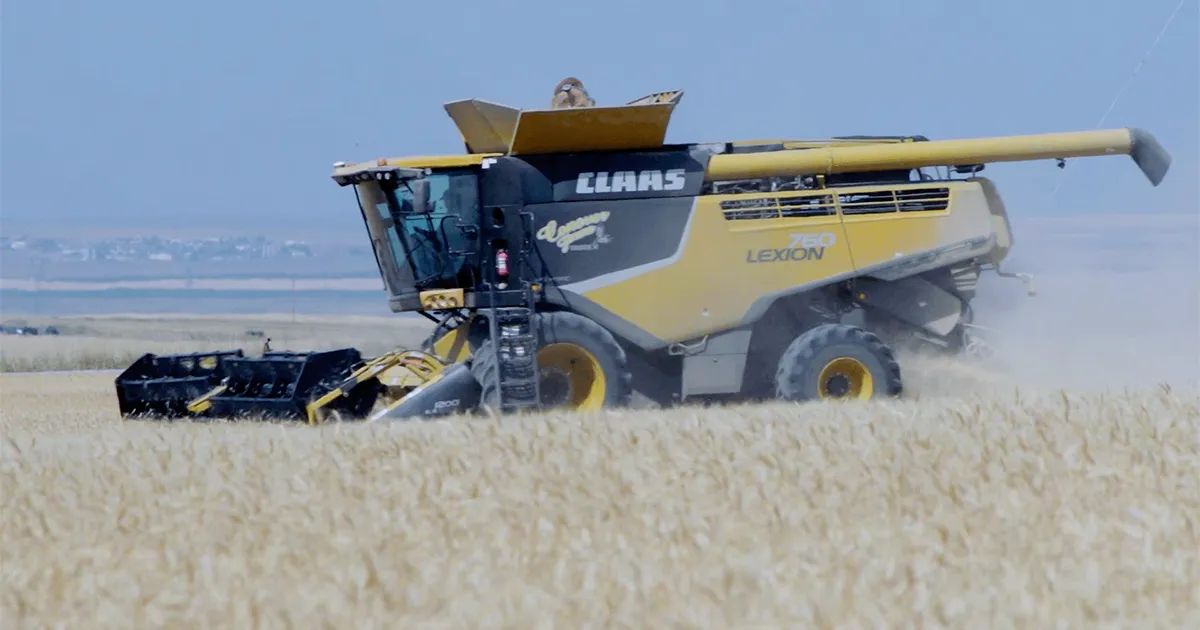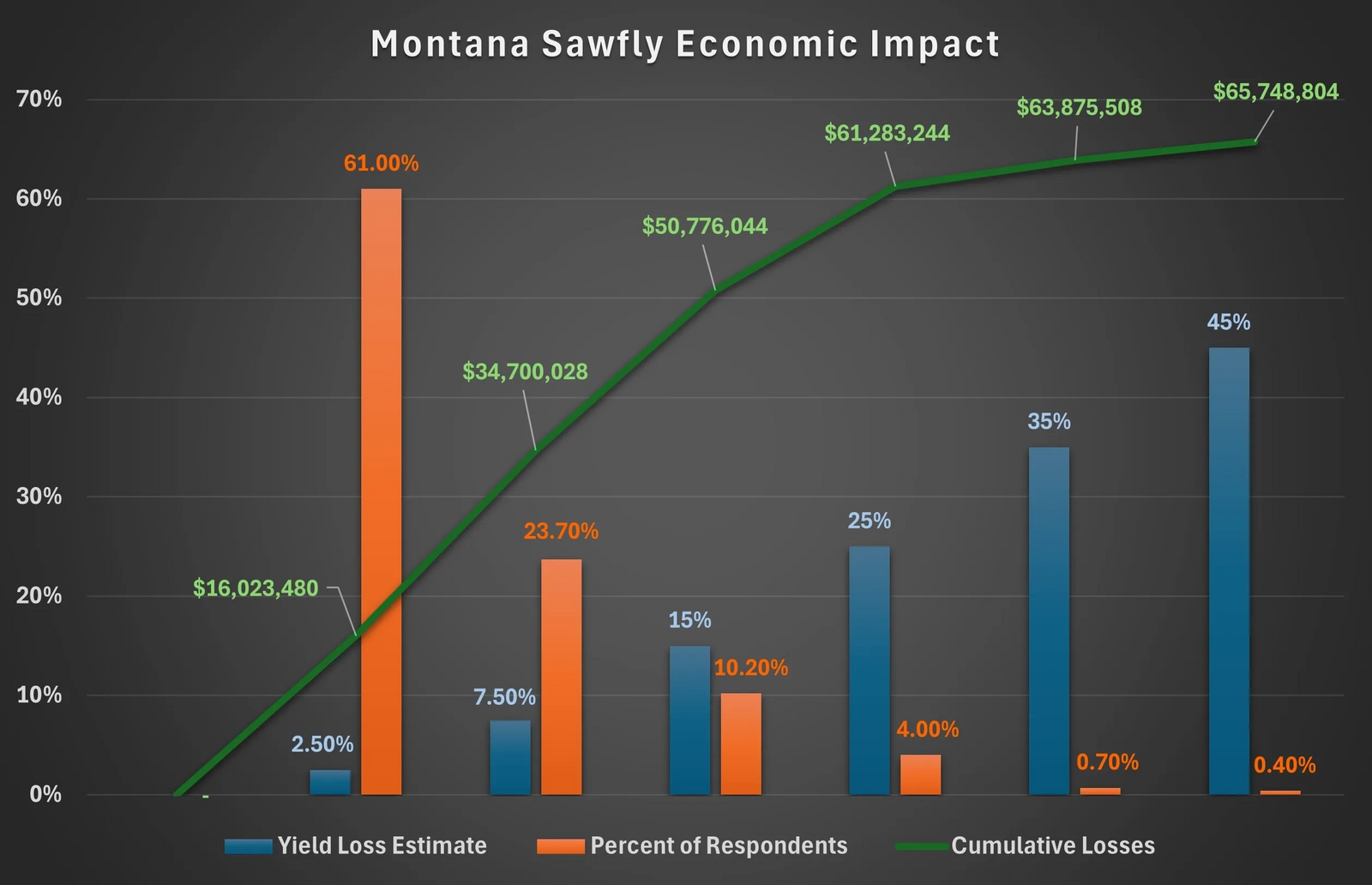
The Big Reveal on Montana Wheat and Barley Variety Surveys
October 4, 2024
Every year, the Montana Wheat & Barley Committee (MWBC) funds the National Agricultural Statistics Service (NASS) Montana wheat and barley variety surveys. The 2024 report released in September spoke loudly about the impact wheat stem sawfly has on growers and the entire supply chain. This grower survey clearly shapes how the industry develops new varieties and it plays a major role in determining what Montana producers plant.
Wheat Notables:
1. Nearly one quarter of all growers said they have lost 6-10% of their crop to wheat stem sawfly. MWBC estimates the annual loss at nearly $66 million for Montana’s 2024 crop. See the graph at end of release.
2. Montana State University’s (MSU) solid stem hard red winter wheat, Bobcat, jumped to the #1 planted variety, accounting for 21.5% of all seeded acres. Bobcat is followed by #2 Warhorse at 13.4%. Warhorse and Bobcat are two of 13 MSU winter wheat varieties on the list totaling more than 50% of all known winter wheat varieties planted in Montana.
3. Released in 2019, Dagmar blew past longstanding Vida, taking the top spot for planted hard red spring wheat at 22%. Dagmar is a high yielding, semi-solid variety, known for higher protein and exceptional end-use characteristics. Vida is the second most-planted at 14.3%; both are MSU varieties which make up 44% of all Montana spring wheat planted.
4. Durum is largely unchanged with Alzada planted more than any other variety in Montana. While many acres are seeded with North Dakota and Canadian varieties, MSU has released promising varieties testing exceptionally well in yield and test weight, such as MT Blackbeard and MT Raska. These are expected to be ready for capacity planting in 2025 and 2026.
Barley Notables:
1. 27% of all known barley varieties planted in Montana are MSU releases. This includes the #2 variety, Hockett, released in 2008.
2. Barley planted acres were down by 270,000 in 2024, a 23% decrease. This shift can be attributed to an adjustment from the 2023 record plantings as malt barley contracts increased and feed demand was strong. It’s worth noting that the continuing U.S. decline in beer consumption is also contributing, in part, to less contracted malt barley acres in 2024.
3. The new barley variety, AAC Synergy developed in Canada, made the list for the first time and was the fourth most popular.

Jason Cook, MSU spring wheat breeder, reflected on how the NASS survey helps breeders stay on track with growers’ interests. “We were pleased to see that Dagmar finally overtook Vida, and by quite a bit,” he said. “This change is important for Montana’s spring wheat crop quality. Dagmar has better end-use qualities and a higher resistance to sawfly than Vida.”
Cook said that demand for Dagmar certified seed should go up and seed supplies should be sufficient for 2025. “The seed consideration results were interesting,” he said. “Growers said they are worried about seed cost and they want to be able to save or ‘hold back’ their seed. We definitely understand this, while maintaining that certified seed helps preserve the identity and ensure performance of the variety you’re growing. If you start using bin-run seed, you can accumulate off-type seed types which can hinder performance, carry over weed seed and foster herbicide resistance.”
Moving forward, Cook said this survey helps to show what traits or issues impact farmers most. The information encourages MSU breeders to set objectives that will stay aligned with producers, such as the resounding exclamation over wheat stem sawfly’s destruction.
“Obviously sawfly continues to be our major focus of our programs due to its economic impact,” added Cook. “And we remain vigilant on other traits like drought tolerance and test weight. The survey helps us align what we are hearing on the ground with what farmers’ perspectives really are. It helps determine how widespread an issue might be.”
Source: MWBC










